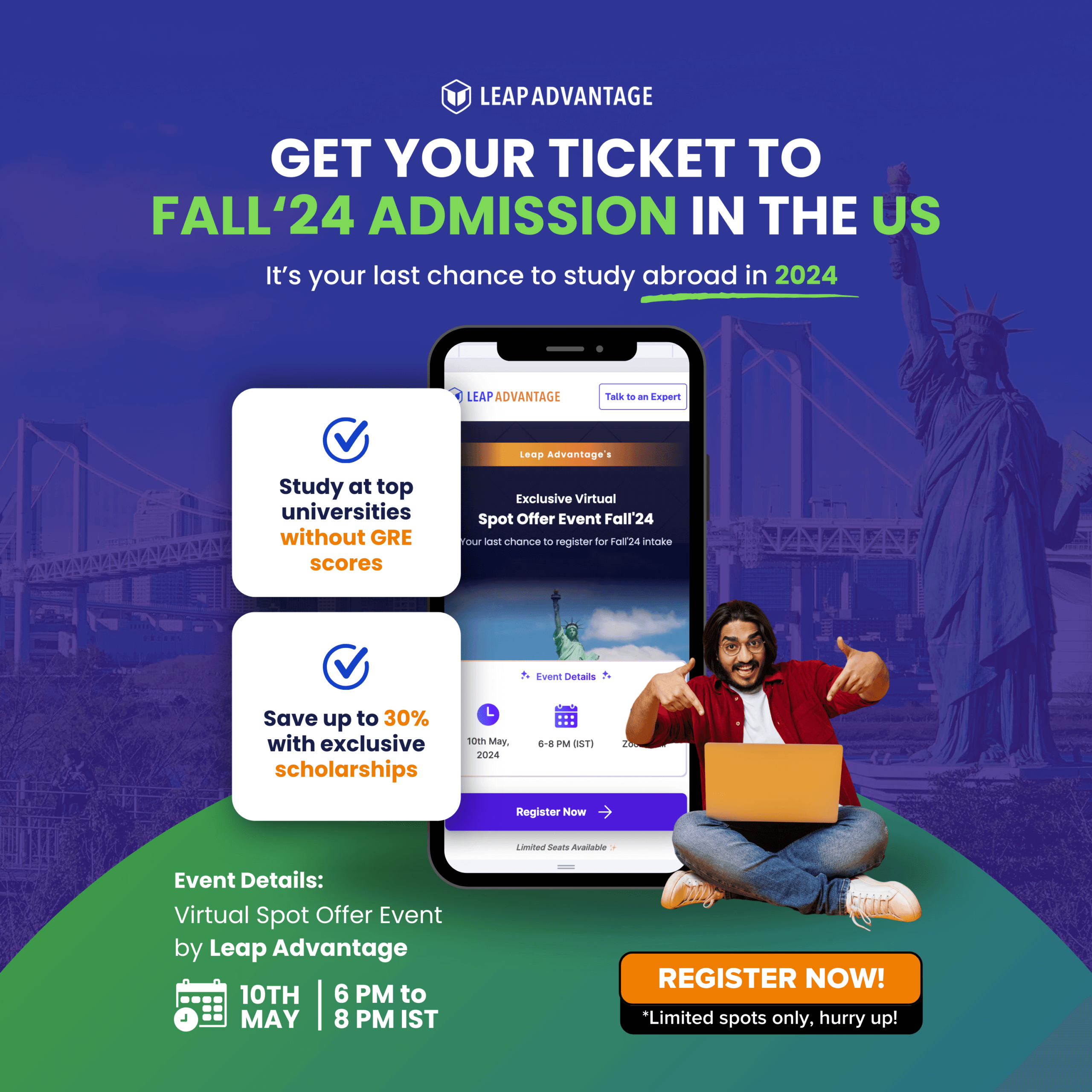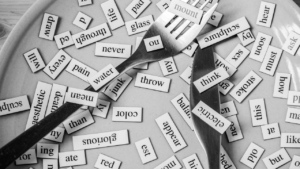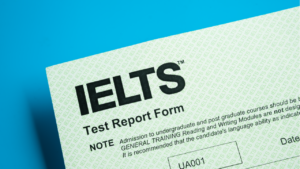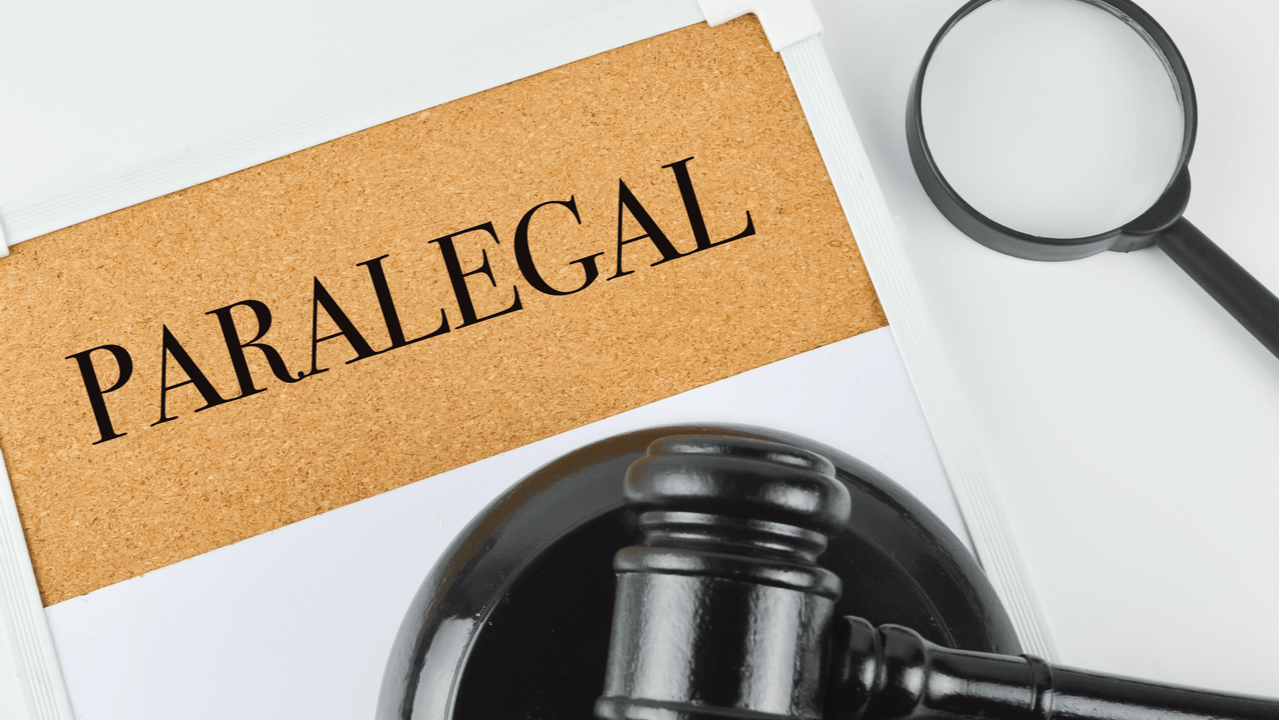Henry Moore was a 20th-century sculptor, who reshaped the artistic landscape. The relationship between art and nature was redefined by his sculptures, which were characterised by organic forms and a deep exploration of space.
His legacy extends beyond his skill in art; Moore has continued to influence contemporary sculpture and inspire generations of artists worldwide.
When the fascinating world of Henry Moore’s artistic legacy is explored many questions arise frequently. Every aspect leads towards curiosity, from the fascinating curves of his sculptures to the detail of his artistic vision.
This blog looks into Henry Moore reading answers of the IELTS Reading practise test. The blog contains answers and explanations to help improve the area you may be lacking and help achieve your desired results.
Good luck with your IELTS preparation!
Leap Advantage Virtual Spot Offer Event on May 10th 2024

Last call to secure your spot for Masters in STEM Program in the US for Fall ’24 exclusively for graduates and above.
Leap Advantage Virtual Spot Offer Event on May 10th 2024
Last call to secure your spot for Masters in STEM Program in the US for Fall ’24 exclusively for graduates and above.

5 Facts about Henry Moore
Henry Moore is a prominent English sculptor and artist widely recognised for his pioneering work in modern sculpture.
He is most famous for creating Abstract Silhouettes and sculptures of great bulk, constructed from bronze and stone, making him an icon in the art world. He’s still an artist with influence today, inspiring and influencing art in all its forms.
Here are 5 facts about Henry Moore
- Aztec Statuary – The Chacmool, is considered Henry Moore’s single most significant influence.
- Henry Moore volunteered for military service.
- Henry Moore joined a surrealist group – Unit One.
- A new generation of sculptors revolted against him.
- Henry Moore initially trained as a teacher.
Henry Moore (1898 – 1986) reading passage
Henry Moore (1898 – 1986) reading passage answers needs to be answered based on the passage given below.
Henry Moore (1898 – 1986)
In the 20th-century art world, Henry Moore was the leading British sculptor.
Paragraph 1
Henry Moore was born in the small town of Castleford near Leeds in the North of England. Raymond Moore and Mary Baker are his parents, he was the seventh child in his family. He did schooling at Castleford grammar school from 1909 to 1915. The place he got interested in art which was encouraged by the teacher named Alice Gostick. After the academics got over, Moore wanted to become a sculptor but instead as per his father’s wish he got trained as a school teacher. In 1917, he had to leave his training as he was sent to France for the First World War.
Paragraph 2
After the war, Moore studied for two years at the Leeds School of Art. The first year was gone by learning and spending time on drawing. He wanted to study sculpture but there was no teacher appointed for that till his second year. In the final year, he got merit in the sculpture exam and was awarded with a scholarship to study in Royal College of Arts in London.
Paragraph 3
In September 1921, he started his advanced studies of sculpture at London. At Royal College he was instructed to visit the London museums and he visited many of them and particularly the British museums which contain a huge-range of ancient sculpture collections. The power and the beauty of the ancient Egyptian and African sculpture was discovered by him during the visits. There his interest over the primitive forms of art got increased and he got away from European sculptural traditions.
Paragraph 4
After graduation, Moore spent the first six months travelling in France in 1925. His visit to the Trocadero Museum in Paris made him get impressed by the cast of Mayan sculpture of rain spirit. The sculpture was a male reclining figure with knees lifted up together and his head in the right angle to its body. Moore got more interested by seeing this stone sculpture and he thought that no other stone sculpture had this much power and originality. That made him sculpt in stone in various subjects that includes reclining women, groups of mother and childs, and masks.
Paragraph 5
The exceptional talent of Moore got recognition which made him work as a sculpture instructor at Royal College in 1926. In 1933, he became a member of unit one which has groups of young artists. The group’s motto is to convince the English public of the emerging international movement of modern art and architecture.
Paragraph 6
In this period, Moore started experimenting with abstract shapes moving away from human figures. At the Leicester galleries in London he held an exhibition. His work got a huge welcome from the fellow sculptors but in the press it got negative reviews this turned Moore into a notorious figure. And from the Royal College he resigned and the following year he started a sculpture department at the Chelsea School of Art in London.
Paragraph 7
Throughout the 1930, Moore did not work to convince the British public. He got interested in the paintings of the Spanish artist Pablo Picasso which inspired him to distort the human body in a radical way. Sometimes he abandons the human figure altogether. In this period, the sketchbooks of Moore reveal the ideas of abstract sculptures that have some resemblance to humans.
Paragraph 8
During the second world war in 1940, Moore stopped teaching at Chelsea school and went to a farmhouse 20 miles north of London. Due to the shortage of materials he started drawing. He started with small sketches of Londoners and later turned that into the large colour drawings in his studio. In 1942, he returned to Castleford to sketch a series of miners working there.
Paragraph 9
In 1944, a town near London named Harlow offered Moore a commission to sculpt a family. The output shows a great change in Moore’s style which is away from the experimentation of natural and human subjects done in 1930. He did many studies in clay for sculpture and they were cast in bronze and issued in 7 to 9 editions. By doing this Moore’s work is available to collectors across the world. The raise in income made him focus on the great projects and worked on the scale based on the demand he felt for his sculptures.
Paragraph 10
Critics who thought that Moore had become less revolutionary were proven wrong. In 1950, the series of standing figures in bronze with the harsh and angular pierced forms and direct impression of menace did that. In 1950’s, Moore varied his subject matter with works such as warrior with shield and falling warrior. It is the rare example of Moore’s use of male figures which happened from the visit to Greece in 1951 where he studied the ancient work of art.
Paragraph 11
In the final years, the Henry Moore Foundation was created to promote his art and to display his work. He was the first modern English sculptor who gained international recognition and is still regarded as one of the most important sculptors of the 20th century.
Crack IELTS Exam in first attempt

Attend Leap’s free masterclass to get tips, tricks and advance strategies to crack IELTS exam in first attempt
Crack IELTS Exam in first attempt
Attend Leap’s free masterclass to get tips, tricks and advance strategies to crack IELTS exam in first attempt

Henry Moore IELTS Reading Q & A
Questions (1-7)
Do the following statements agree with the information in Reading Passage?
In boxes 1-7 on your answer sheet, write
YES if the statement agrees with the information
NO if the statement contradicts the information
NOT GIVEN if there is no information on this
- After his schooling, Moore learned about sculpting
- In the first year of Leeds School of Art, he studied about sculpting
- At the Royal College of Art he gained recognition for teaching sculpture excellently
- Only by visiting the London museums, Moore got aware of ancient sculpture
- Mayan sculpture in the Trocadero Museum gains a lot of public interest.
- Moore thought that Mayan sculpture was similar to other stone sculptures.
- The unit one member wanted to make modern art and architecture popular.
Answers (1-7)
- NO
Reference:
From paragraph 1, ‘After the academics got over, Moore wanted to become a sculptor but instead as per his father’s wish he got trained as a school teacher’.
Explanation: The answer is No, as Moore’s father wanted him to become a school teacher instead of a sculptor, and so, Henry Moore followed his father’s wish and received training as a teacher after finishing his academics.
- NO
Reference:
From paragraph 2, ‘After the war, Moore studied for two years at the Leeds School of Art. The first year was gone by learning and spending time on drawing’.
Explanation: The passage states that in his first year at the Leeds School of Art, Henry Moore did not study sculpture because no teacher was appointed for that until his second year. So, the answer is No.
- NOT GIVEN
Reference:
No reference
Explanation: The answer is Not Given because no information is mentioned of Henry Moore being an excellent sculpture teacher at the Royal College of Art.
- YES
Reference:
From paragraph 4, ‘In September 1921, he started his advanced studies of sculpture at London. At Royal College he was instructed to visit the London museums and he visited many of them and particularly the British museums which contain a huge-range of ancient sculpture collections’.
Explanation: That statement suggests that Henry Moore discovered the power and beauty of ancient Egyptian and African sculpture by visiting the London museums, particularly the British museums, which had a vast collection of ancient sculptures. Therefore, the answer is Yes.
- NOT GIVEN
Reference:
No reference.
Explanation: In the entire passage, there is no information on the public interest regarding the Mayan sculpture in the Trocadero Museum.
- NO
Reference:
From paragraph 4, ‘His visit to the Trocadero Museum in Paris made him get impressed by the cast of Mayan sculpture of rain spirit. The sculpture was a male reclining figure with knees lifted up together and his head in the right angle to its body’.
Explanation: The answer is No because the line states that Moore was impressed by the power and originality of the Mayan sculpture he saw and believed that no other stone sculpture had that much power and originality.
- YES
Reference:
From paragraph 5, ‘In 1933, he became a member of unit one which has groups of young artists. The group’s motto is to convince the English public of the emerging international movement of modern art and architecture’.
Explanation: Yes, that statement accurately describes the motto of Unit One, a group of young artists that Henry Moore became a member of in 1933. The group aimed to promote the emergence of the international movement of modern art and architecture to the English public.
Questions (8-11)
Complete the notes below.
Write NO MORE THAN TWO WORDS for each answer.
- He ____________ from the Royal college.
- Moore began sketching because of the unavailability of sculpture ______________.
- Moore did drawings of ______________ while visiting his hometown.
- Moore’s work was purchased by _____________ at the beginning.
Answers (8-11)
- Resigned
Reference:
From paragraph 6, ‘ And from the Royal College he resigned and the following year he started a sculpture department at the Chelsea School of Art in London’.
Explanation: Henry Moore resigned from the Royal College of Arts in London after his work received negative reviews from the press. In 1932, he started a sculpture department at the Chelsea School of Art in London.
- Materials
Reference:
From paragraph 8, ‘Due to the shortage of materials he started drawing. He started with small sketches of Londoners and later turned that into the large colour drawings in his studio’.
Explanation: The line “Due to the shortage of materials he started drawing” suggests that the shortage of sculpture materials during the Second World War led Henry Moore to draw as an alternative medium for his artistic expression.
- Miners
Reference:
From paragraph 8, ‘In 1942, he returned to Castleford to sketch a series of miners working there’.
Explanation: According to the passage, In 1942, Henry Moore returned to his hometown of Castleford to sketch a series of miners working there.
- Collectors
Reference:
From paragraph 9, ‘By doing this Moore’s work is available to collectors across the world. The raise in income made him focus on the great projects and worked on the scale based on the demand he felt for his sculptures’.
Explanation: In the passage, it is stated that collectors across the world purchased Henry Moore’s work, resulting in an increase in his income. As a result, he could focus on larger projects and scale his sculptures based on the demand he experienced.
Questions (12-14)
Choose the correct letter a,b,c, or d.
12. For which institute Moore got a scholarship award?
- Castleford grammar school
- Royal College of Arts
- Leeds School of Art
- Chelsea School of Art
13. What sculpture made Moore receive commission?
- Warrior with shield and falling warrior
- Mayan sculpture
- Abstract sculptures
- Family sculpture
14. Which series of Moore gained recognition?
- Primitive forms of art
- Reclining women
- Standing figures in bronze
- Abstract sculpture
Answers (12-14)
- ( B ) Royal College of Arts
Reference:
From paragraph 2, ‘In the final year, he got merit in the sculpture exam and was awarded with a scholarship to study in Royal College of Arts in London’.
Explanation: According to the reference, the scholarship that Henry Moore was awarded was for studying at the Royal College of Arts in London.
- ( D ) Family Sculpture
Reference:
From paragraph 9, ‘In 1944, a town near London named Harlow offered Moore a commission to sculpt a family’.
Explanation: The above statement indicates that Henry Moore received a commission to create a sculpture of a family in Harlow near London in 1944.
- ( C )Standing Figures in Bronze
Reference:
From paragraph 10, ‘Critics who thought that Moore had become less revolutionary were proven wrong. In 1950, the series of standing figures in bronze with the harsh and angular pierced forms and direct impression of menace did that’.
Explanation: According to the reference, the series of standing figures created a significant revolution and proved critics wrong who believed that Moore had become less revolutionary. The standing figures were of bronze, with harsh and angular pierced forms that created a direct impression of menace.
Tips on how to prepare for the IELTS exam
It may seem overwhelming to prepare for the IELTS exam, but this goal is achievable through a good strategy. To help you maximise your preparation and success during the IELTS test, here are five valuable tips.
Tips for preparation
- Understand the test format
- Practise regularly
- Develop your reading skills
- Increase your vocabulary
- Time Management
Summing Up
As we come to the end of the blog, a legacy of innovation and inspiration was discovered in the world of Henry Moore’s art. Moore’s sculptured brilliance has transformed stone and bronze into beautiful forms, which have taken them to a very prominent place in art history.
An enduring testament to his artistic creativity is his dedication to capturing the human essence through abstract and organic shapes.
Therefore, this blog will help you develop your vocabulary and reading skills. For further guidance, our Leap IELTS Expert can help and guide you through your IELTS preparation journey.
Frequently Asked Questions (FAQs)
Q. Who is Henry Moore, and why is he significant in the world of Art?
Ans. A famous British sculptor, Henry Moore was known for his innovative and influential contributions to modern sculpture. His unique style, characterised by organic forms and his explorations of the human form, has earned him an international reputation and lasting influence on the art world.
Q. How did Henry Moore’s background or experiences influence his artistic vision?
Ans. In shaping his artistic vision, Moore’s early years in Yorkshire, his exposure to the natural landscape, and his studies in sculpture at the Royal College of Art played an important role. His thoughts on the human body and appearance were influenced by his experiences in World War I when he served as a soldier.
Q. What are the key themes or characteristics in Henry Moore’s sculptures?
Ans. The themes of nature, human form and abstraction played a significant role in Moore’s sculptures. The unique combination of organic and abstract elements has been highlighted by applying flowing, biomorphic forms and his exploration of negative space.
Q. What are effective strategies for IELTS reading comprehension?
Ans. To quickly grasp critical concepts and to find specific information, develop skimming and scanning techniques. To understand the structure and purpose of different passages, practice regularly with timed reading exercises and different texts.
Q. What inspired Henry Moore’s fascination with the human figure and nature?
Ans. Henry Moore’s inspiration came from various sources, including natural forms, pre-Columbian art, and non-Western sculptures. His desire to explore universal topics and the inter-linkages between humans and nature-inspired his fascination with natural forms, landscapes or human bodies.
Q. What is the significance of Henry Moore’s legacy in contemporary art?
Ans. Moore’s legacy in contemporary art persists through his enduring influence on sculptural practices, education, and public art initiatives. Modern sculptors continue to be inspired by his inventive approach to form, space and the human figure; encouraging dialogues about art’s role in society.
Q. Did Henry Moore’s works influence other artists’ disciplines beyond sculpture?
Ans. Yes, Moore’s artistic innovations went beyond sculpture and influenced various creative fields such as architecture, design or even the broader field of art. His exploration of form and space profoundly impacted the creative realms beyond sculptural practices.
Q. Are there specific materials available for IELTS preparation?
Ans. There are a variety of resources to help prepare for the English language exam, such as Official IELTS practice materials, examination samples, courses on the internet and books specifically written with an eye towards preparing for the test. If you want to learn more about the test format and types of questions, use these resources along with practice tests.
Q. How did Henry Moore’s cultural context influence his artistic expressions?
Ans. Moore was among a group of artists who responded to the turmoil of the 20th century. His artistic expression was influenced by his experiences during the war and societal changes, leading him to explore resilience, humanism, and the universality of the human form in his sculptures.
Q. What strategies help improve vocabulary for the IELTS test?
Ans. To improve vocabulary, read English extensively and cover various genres and topics. If you want to know and study new words more often, use flashcards or apps. To ensure you understand them, practice using new vocabulary in writing and speaking tasks.
Q. What are common mistakes to avoid during IELTS preparation?
Ans. You should avoid concentrating only on one area, and neglecting the rest. Understand the testing format and instructions as well, don’t forget. Last, cramming right before the test date is not as efficient as consistent practice over time.






